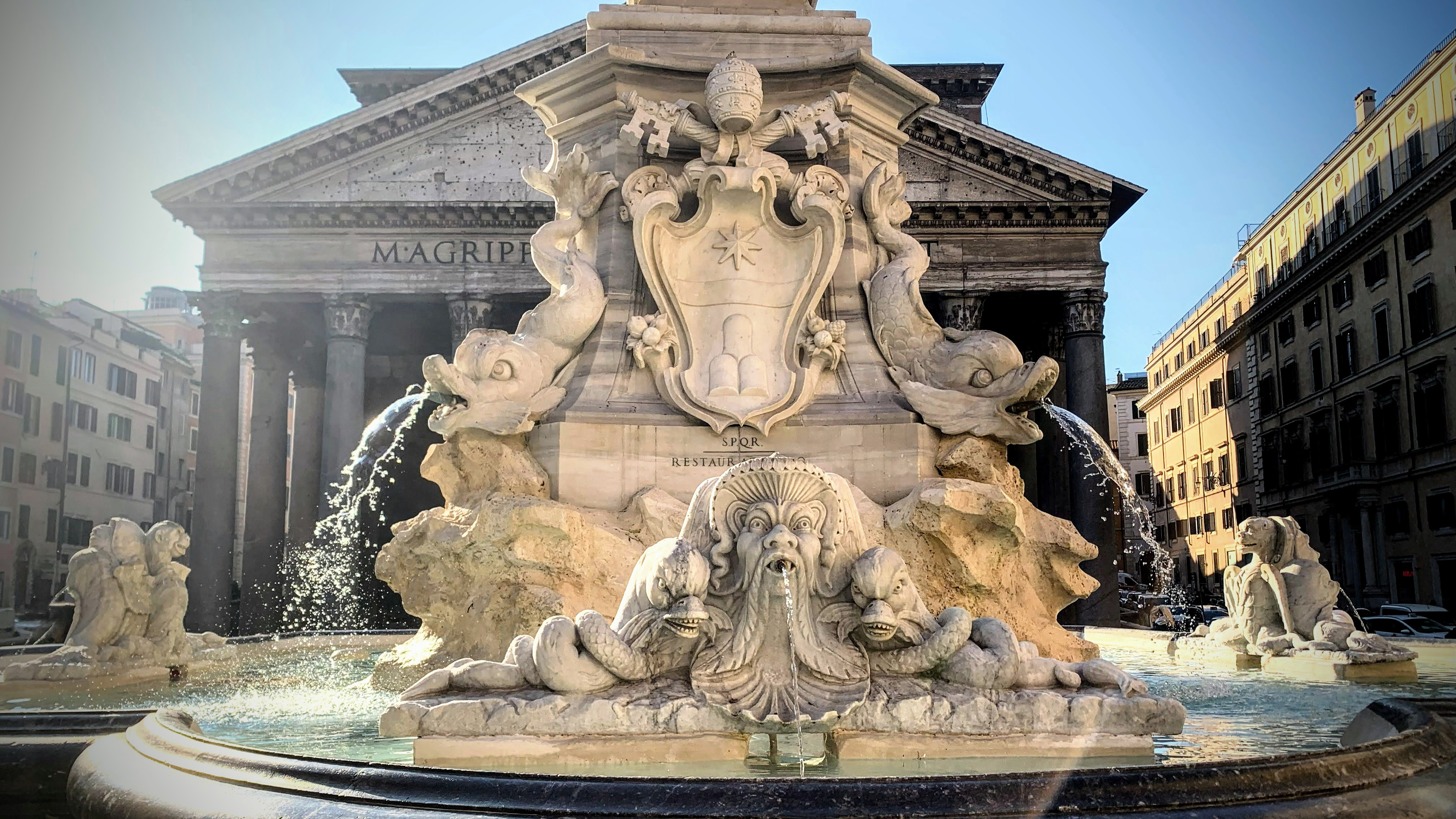
Realizada por el escultor Leonardo Sormani, basada en un diseño de 1575 del arquitecto Giacomo Della Porta (1533-1602), la fuente del Pantheón fue una de las primeras fuentes construidas en la Roma del Renacimiento. La fuente fue construida tras la restauración del acueducto Vergine (1570) que abastece, entre otras, a la Fuente de la Barcaccia, la Fuente de Trevi y la Fuente de los Cuatro Ríos.
Originalmente estaba formado por una cuenca mixtilínea de mármol gris africano, con los lados interrumpidos por cuatro arcos de medio punto y rematada por un balaustre que sostenía una pila. En los mangos de los semicírculos se insertaron cuatro máscaras, en cuyo reverso estaban representados dragones, símbolos heráldicos del papa Gregorio XIII Boncompagni (1572-1585). Una balaustrada exterior y tres escalones rodeaban la piscina. Del complejo Della Porta, sin embargo, hoy sólo queda el estupendo lavabo de mármol, ya que la fuente fue transformada paulatinamente por una serie de intervenciones que se fueron produciendo a lo largo del tiempo.
En 1662 se rebajó el nivel de la plaza, se eliminaron la balaustrada y los escalones y se construyó el gran basamento que refleja el motivo mixtilíneo de la cuenca. En 1711, por voluntad del papa Clemente XI Albani (1700-1721), en lugar de la cuenca superior se añadió el obelisco central de Ramsés II, procedente de Iseo Campense y transportado hasta aquí desde la cercana Piazza San Macuto. Sostenido por una compleja base escultórica, obra de Filippo Barigioni (c. 1690-1753), el obelisco se alza sobre un falso acantilado de travertino, sobre el que se alza un pedestal con delfines en las esquinas, mientras que en dos caras del mismo están esculpidos dos monumentales escudos de armas de la familia Albani. Al otro lado, un epígrafe recuerda las intervenciones del Papa Clemente XI. En la base de este pedestal otras inscripciones recuerdan las distintas restauraciones a las que fue sometida la fuente.
Durante la restauración de 1880, las grandes máscaras originales, ahora en el Museo de Roma, fueron reemplazadas por copias del siglo XIX realizadas por Luigi Amici (1817-1897). Finalmente, en 1928 se eliminaron las columnas y vallas que rodeaban el tanque.
La fuente sufrió nuevas intervenciones de restauración en 1974, 1991-1992 y 2024.
Foto: Turismo Roma
Informaciones
 Condividi
Condividi
Location
Para conocer todos los servicios de accesibilidad, visite la sección Roma accesible.











































